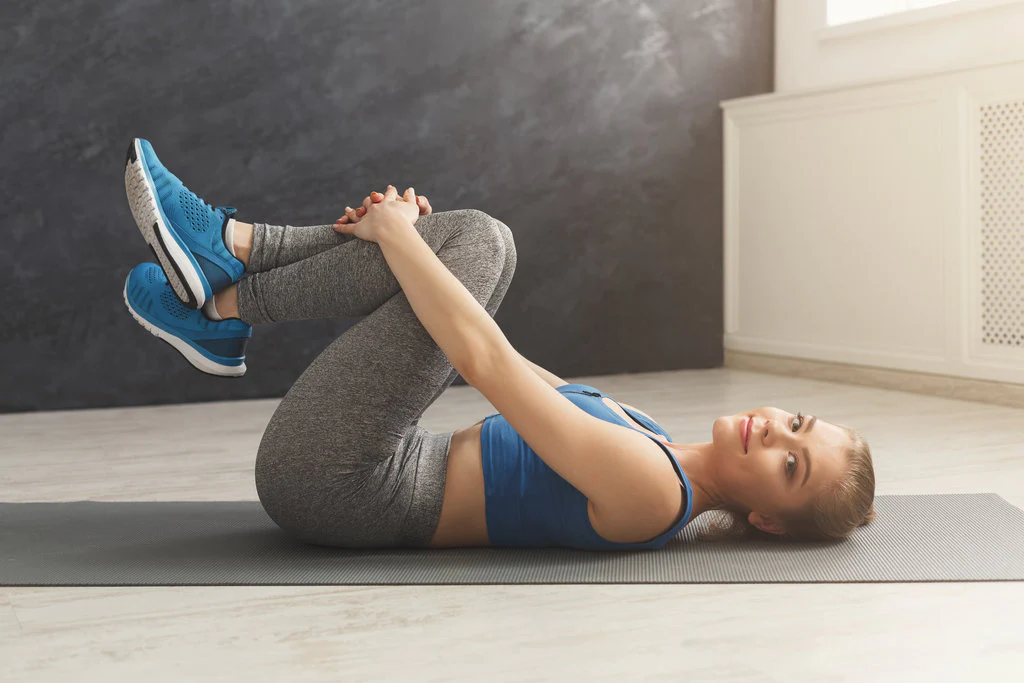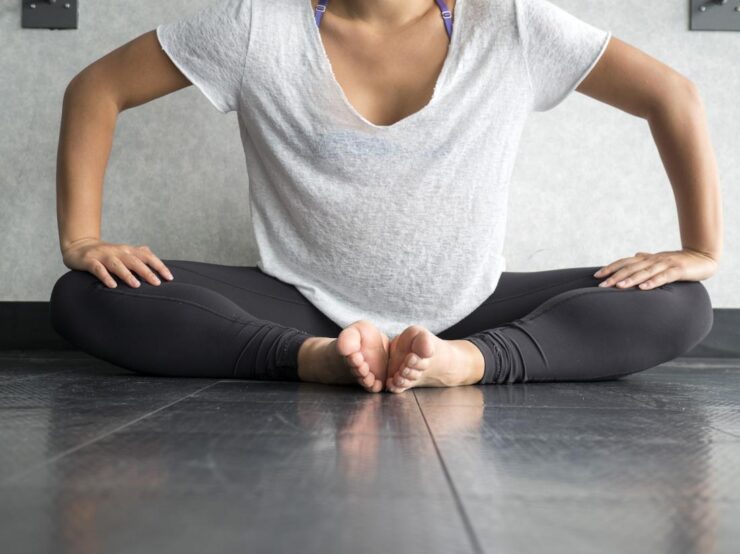Hip pain is a common complaint that can interfere with daily activities and quality of life. Innovative stretching techniques offer a promising way to find relief through simple movements and poses that relax the muscles and joints. This article provides an overview of gentle stretches that can ease discomfort in the pelvic area without requiring expensive equipment or therapy.
From basic hamstring and piriformis stretches to gentle yoga and Pilates-inspired movements, these techniques leverage your body’s natural healing abilities. By following the guidance provided, many readers may achieve reduced pain in the pelvic area and restored mobility.
Understanding Hip Pain

Pain in the pelvic area has many potential causes including injuries, arthritis, tendonitis, and muscle strains. The pelvic joint is a ball and socket joint, so pain can originate from the ball at the top of the femur, the socket of the pelvis, or any of the tissues in between like muscles or cartilage. Common symptoms beyond pain include stiffness, tenderness, reduced range of motion, clicking, and difficulty walking or bending. Determining the exact cause of pain in this area usually requires an examination by a doctor or physical therapist.
However, certain lifestyle factors like overuse, muscle imbalances, and excess weight can also contribute to discomfort. Understanding where your individual pain in the pelvic area originates can help guide effective stretching and treatment techniques.
Traditional Stretching vs. Innovative Techniques
Traditional stretching in this area typically includes basic moves like knee-to-chest pulls, figure four stretches, and simple hamstring stretches. These can be effective but are often held statically at the maximum stretch which may strain the muscles. Innovative techniques take a more gentle approach with stretches flowed together through greater ranges of motion. Methods like restorative yoga, myofascial release, and dynamic stretches are aimed at slowly coaxing the connective tissues to lengthen while relaxing the muscles.
The focus is on moving fluidly in and out of stretches to reduce tension rather than forcing the body into one position. This gentler approach may allow those with painful tightness in the pelvic area to stretch and strengthen without causing additional discomfort or injury. Using a combination of patient static stretching and these newer innovative practices may provide optimal relief for pain in the pelvic area.
Innovative Stretching Techniques for Hip Pain Relief

Several innovative stretching techniques can aid thigh area
pain relief by releasing tightness and tension in the muscles, fascia, and joint tissue. Hip flexor releases allow the extensors, hamstrings, and glutes to relax. Foam rolling applies strategic pressure to trigger point muscles like the piriformis to improve mobility and soothe stiffness. Restorative yoga moves like pigeon and lizard poses slowly coax the hips through their fullest range of motion without forcing. Yoga lunges improve mobility and balance together. Gentle figure four stretches help loosen tight rotators.
Pelvic tilts realign the hips for better joint function, while extensions reduce compression. Dancers’ stretches combat limited external rotation, and hip circles restore fluid mobility. Following an integrated series of these stretches consistently can help provide progressive cumulative relief from chronic hip discomfort.
Incorporating Tools into Your Stretching Routine
Integrating specialized tools into stretching routines can enhance the effectiveness of exercises aimed at relieving hip pain. CastleFlexx, a versatile stretching aid, can be used in various ways to support and intensify stretches. Here’s how it might fit into different innovative stretching techniques:
Specialized stretching tools can enhance hip pain relief techniques:
- Foam Rollers – Apply self-myofascial release to hips and thighs before stretching. Helps relax tight muscles.
- Resistance Bands – Add intensity to hip opener stretches by looping bands around legs. Focuses on joint mobilization.
- Yoga Props – Use straps or blocks to assist getting into/holding stretches safely. For proper alignment.
- Compression – Warm packs or hip compression wraps help improve circulation prior to stretching.
- Massage Devices – Handheld tools like massage balls target tense trigger points in the hips and glutes.
- Online Programming – Video guidance provides customizable hip flexibility programming for all levels.
Using these aids with gentleness under supervision optimizes hip stretching benefits long-term by allowing gradual, paced progression minus strain.
Building a Routine for Long-Term Hip Health

Creating a sustainable and effective hip stretching routine is essential for long-term hip health and mobility. Here are some key considerations and tips for building a routine that supports health over time:
Creating a Sustainable Routine:
Set Realistic Goals: Start with manageable stretches and gradually increase intensity and complexity.
Incorporate Variety: Use a mix of dynamic, static, and functional stretches to keep the routine balanced and engaging.
Schedule Regular Sessions: Consistency is key. Aim to stretch at regular intervals, whether daily or several times a week.
Consistency and Progression:
Be Consistent:
– Practice hip flexibility exercises like dynamic stretches, yoga, or gyrokinesis at least 2-3 times per week. Greater frequency leads to greater gains over time.
– Commit to 15-30 minute stretching sessions whenever possible (up to daily). Shorter durations are fine to begin.
Track Progress:

– Keep a flexibility journal to monitor range of motion. Note ease getting into/out of vehicles, putting on shoes, walking uphill, etc.
– Log pain levels before/after stretching using a simple numeric scale. Pain should ease with regular practice.
– Take monthly before/after photos demonstrating posture and mobility changes to maintain motivation.
Listen To Your Body:
– Go at your own pace without comparisons. Stretches should feel good or you risk compensatory movements/injury.
– Scale back immediately if exercises ever cause sharp pinching, numbness or worsen existing pain. Consult a physical therapist regarding proper form.
– Don’t bounce or force range. Use props like straps/blocks if needed to open the hips safely and gently.
Additional Lifestyle Changes:
Supporting hip health extends beyond just stretching. Making ergonomic adjustments like using supportive chairs, improving posture, and taking regular activity breaks can tremendously reduce hip strain from sedentary routines.
Cross-training with low-impact cardio like swimming and cycling maintains strength while giving joints a break from high-impact stress. Mind-body practices like yoga, Pilates, and tai chi incorporate deliberate, balanced movements that build connectivity throughout the pelvic and core areas. As the body works as an interconnected system, enhancing lifestyle factors that complement flexibility training is key.
With a commitment to self-care on all levels – physical, mental, and environmental – lasting comfort and ease of motion in the pelvic area can be achieved through a holistic approach.
Conclusion
Innovative hip stretching techniques that incorporate fluid movements, gentle assisted poses, and specialized equipment provide well-rounded relief from chronic hip pain. By following the guidance in this article to understand upper leg anatomy, compare stretching methods, and build a progressive routine, many readers may find a customized solution for restoring comfortable mobility.
While every body is unique, the gentle generosity and patience encouraged through these alternative stretches empowers individuals to reconnect with their hips’ incredible potential for flexible strength. With consistency over time, these innovative stretches can help pave the path to sustainable health, whether you’re recovering from injury or seeking freedom for everyday activity through preventative care.

